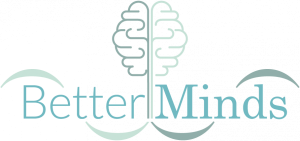Increasing Engagement and Reducing DNAs
Increasing engagement and reducing DNAs (did not attends) has a huge impact on every service. There are many reasons people do not show up to their appointments, and this non-attendance is a huge cost. Over the last few decades science based approaches have been developed to reduce DNAs by making subtle, low or zero-cost interventions . These make better use of staff resources and reduce the intensity of the support services users, patients and clients need at the time they engage with services. More recently, the NHS has saved £200 million by adopting these approaches, by asking just one question to people when they were making their appointments. The Increasing Engagement strategies are incredibly simple, but will create better working environments, raise morale, reduce the complexity of the challenges of your service users group, and serve the needs of your commissioners. If you want to reach these outcomes, get up to speed on the current science that reduces DNAs and simultaneously increases engagement.
An Introduction to the Betterminds' Increasing Engagement and Reducing DNAs Course
The Betterminds course is designed to help reduce DNAs in your service to save your practice’s resources. Using science based research into increasing engagement, this course will offer you and your team a range of tools and techniques to reduce the number of missed appointments that take place in the early stages of treatment.
The training will offer approaches that are simple to implement, helping to reduce DNAs from the initial contact. Building on the most effective tools to reduce the likelihood of missed appointments at each and every step of the contact process, this course will help implement better engagement, more enhanced motivation and greater opportunity to meet service users needs’ more easily.
By accessing this skill set, your staff and service will reduce the underlying cost of individual treatment episodes for the most vulnerable, allowing you to make best possible use of your resources. The earlier you can begin supporting your service users, the less complex their needs, and the more rapid their ability to move through treatment.
How Long is the Increasing Engagement and Reducing DNAs Course?
The Betterminds Increasing Engagement and Reducing DNAs course usually runs for a single day. However, this may be extended depending on the requirements of your organisation.
What Will My Team Gain From The Betterminds' Increasing Engagement and Reducing DNAs Course
- Greater key working skills
- A reduced rate of DNAs
- Awareness of how to Increase KPI outcomes
- A more dynamic work environment
- Increased morale as more effective work is undertaken
Where Will The Betterminds' Increasing Engagement and Reducing DNAs Course Be Useful
This course is useful in all organisations that work with vulnerable people, and who may struggle to engage with services leading to missed appointments.
This can include all aspects of social care, criminal justice and substance misuse services. This training will help raise attendance and engagement in social housing, probation services, drug treatment provision, eating disorders, mental help provision and any form of community engagement and social prescribing.
What Are The Primary Course Objectives
- Understand the reasons why service users do not attend appointments
- Build skills to increase engagement
- Understand how persuasion science can offer opportunities in treatment
- Understand how the work environment directly impacts on attendance
- Make use of no cost techniques to address the work environment in order to increase attendance and engagement
- Develop practical skills to raise commitment and engagement
- Understand how intrinsic and extrinsic rewards can increase engagement
What Else Will Our Team Learn
- Recognise the impact of poor engagement
- Learn how to construct science based effective appointment letters
- Develop effective questioning tools and persuasion techniques
- Gain an understanding of why people still may not engage in treatment
- Develop tools and techniques to engage in first contact phone calls that limit DNAs
- Develop approaches to upskill first contact staff to enhance engagement
- Manage your environment to increase engagement
- Learn rapid rapport building tools
- Build effective assessment approaches to boost motivation, increase expectations and promote ongoing engagement
